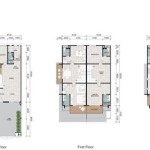House Plant Problem Solving: A Systematic Approach
Cultivating thriving house plants can be a rewarding experience, bringing natural beauty and improved air quality into the indoor environment. However, even the most dedicated plant enthusiasts encounter challenges. Recognizing and addressing these challenges effectively requires a methodical problem-solving approach. This article will outline a systematic process for diagnosing and resolving common house plant problems.
The initial and most crucial step in plant problem-solving is observation. Regular and thorough inspection of plants allows for the early detection of potential issues. Rather than waiting for a plant to exhibit obvious signs of distress, proactive observation enables timely interventions and prevents problems from escalating. This involves not only visually examining the plant but also considering its overall environment and care routine.
Observational skills are honed with practice and familiarity with the specific species of plant being cultivated. Different plant species exhibit varying sensitivities to environmental factors and care practices. Understanding the specific needs of each plant will provide a baseline for comparison, making it easier to identify deviations from normal growth patterns.
Key Point 1: Accurate Diagnosis Through Systematic Observation
A successful problem-solving process begins with accurate diagnosis. This involves systematically observing the plant for any deviations from its normal, healthy state. The observation should encompass all parts of the plant, including the leaves, stems, roots, and soil.
Leaf Examination: Begin by examining the leaves. Note their color, texture, and shape. Look for signs of discoloration, such as yellowing (chlorosis), browning, or spotting. Check for the presence of pests, such as aphids, spider mites, or mealybugs. Observe the leaf surfaces for any unusual textures, such as stickiness or webbing. Evaluate the overall health of the leaves – are they wilting, curling, or exhibiting stunted growth? The pattern of the discoloration or damage can provide important clues as to the underlying cause.
Stem Inspection: Next, inspect the stems and branches. Look for signs of damage, such as lesions, cracks, or soft spots. Note the color and texture of the bark. Examine the points where leaves emerge from the stems for any signs of pest infestation or disease. Assess the overall strength and stability of the stems – are they sturdy and upright, or weak and drooping?
Root Assessment: While not always immediately accessible, the root system is a critical indicator of plant health. If possible, gently remove the plant from its pot to examine the roots. Healthy roots are typically firm, white or light brown, and well-distributed throughout the soil. Look for signs of root rot, indicated by dark, mushy, or foul-smelling roots. Assess the root mass – is it tightly bound or sparsely developed? Overly compacted roots can indicate that the plant needs repotting.
Soil Evaluation: The soil is the plant's primary source of nutrients and water. Evaluate the soil's moisture level – is it too wet, too dry, or just right? Check the soil's texture – is it well-draining, or does it retain too much water? Look for signs of mold or algae growth, which can indicate poor drainage or excessive humidity. Note any unusual odors, which could indicate anaerobic conditions or root rot.
Once the initial observations are complete, the next step is to consider the plant's environment and care routine. This involves evaluating the factors that directly influence the plant's health and well-being.
Key Point 2: Evaluating Environmental Factors and Care Practices
Understanding the plant's specific environmental needs is crucial for providing optimal growing conditions. This includes assessing light exposure, temperature, humidity, and air circulation. Furthermore, it's essential to examine the plant's watering schedule, fertilization regimen, and repotting history.
Light Exposure: Determine the amount of light the plant is receiving. Different plants have different light requirements, ranging from bright, direct sunlight to low, indirect light. Observe how the plant is positioned in relation to windows and other light sources. Note any changes in light exposure throughout the day or year. Signs of insufficient light include leggy growth, pale leaves, and a lack of flowering. Excessive light can cause leaf scorch or yellowing.
Temperature: Most house plants thrive in temperatures between 65°F and 75°F (18°C and 24°C). However, some plants prefer warmer or cooler temperatures. Avoid placing plants near sources of heat or cold, such as radiators, air conditioners, or drafty windows. Sudden temperature fluctuations can stress plants and make them more susceptible to problems.
Humidity: Many house plants, especially those native to tropical regions, require higher humidity levels than are typically found in indoor environments. Low humidity can cause leaf browning, crispy edges, and stunted growth. Increase humidity by grouping plants together, using a humidifier, or placing plants on trays filled with pebbles and water.
Air Circulation: Good air circulation helps to prevent fungal diseases and pest infestations. Avoid placing plants in stagnant air or overcrowded conditions. Open windows or use a fan to provide gentle air movement.
Watering Schedule: Overwatering and underwatering are two of the most common causes of house plant problems. Determine the appropriate watering schedule for the specific plant species. Allow the soil to dry slightly between waterings, but avoid allowing the plant to dry out completely. Use a well-draining potting mix to prevent waterlogging. Water thoroughly, ensuring that the entire root ball is moistened.
Fertilization Regimen: Plants require nutrients to grow and thrive. Fertilize plants regularly during the growing season (typically spring and summer) with a balanced fertilizer. Follow the instructions on the fertilizer label carefully to avoid over-fertilizing, which can damage the roots. Do not fertilize plants during the dormant season (typically fall and winter).
Repotting History: Plants may need to be repotted periodically as they grow. Repotting provides fresh soil and allows the roots to expand. Repot plants when they become root-bound or when the soil is depleted of nutrients. Choose a pot that is slightly larger than the previous pot.
After carefully observing the plant and evaluating its environment and care routine, the next step is to identify potential causes of the problem. This involves considering the various factors that could be contributing to the plant's distress.
Key Point 3: Identifying Potential Causes and Implementing Solutions
Based on the observations and environmental assessments, formulate a hypothesis regarding the cause of the plant's problem. Common causes include pests, diseases, nutrient deficiencies, improper watering, and inadequate light. Once a potential cause is identified, research appropriate solutions and implement them carefully. Monitor the plant's response to the treatment and adjust accordingly.
Pest Infestations: If pests are present, identify the type of pest and choose an appropriate treatment method. Common house plant pests include aphids, spider mites, mealybugs, scale, and thrips. Treatment options include insecticidal soap, neem oil, and horticultural oil. Quarantine the infested plant to prevent the spread of pests to other plants.
Diseases: Plant diseases can be caused by fungi, bacteria, or viruses. Identify the type of disease and choose an appropriate treatment method. Common house plant diseases include root rot, powdery mildew, and leaf spot. Treatment options include fungicides and bactericides. Improve air circulation and avoid overwatering to prevent disease outbreaks.
Nutrient Deficiencies: Nutrient deficiencies can cause a variety of symptoms, such as yellowing leaves, stunted growth, and a lack of flowering. Determine which nutrients are deficient and supplement the plant with an appropriate fertilizer. Ensure that the soil is well-draining and has a balanced pH.
Improper Watering: Overwatering can lead to root rot, while underwatering can cause wilting and leaf drop. Adjust the watering schedule to provide the appropriate amount of moisture for the specific plant species. Use a well-draining potting mix to prevent waterlogging.
Inadequate Light: Insufficient light can cause leggy growth, pale leaves, and a lack of flowering. Move the plant to a location with more light, or supplement with artificial light if necessary. Avoid placing plants in direct sunlight, which can cause leaf scorch.
After implementing the chosen solution, it is imperative to monitor the plant's response. Regularly observe the plant for any signs of improvement or deterioration. Adjust the treatment plan as needed based on the plant's response. It may take several weeks or even months to see noticeable results.
Effective house plant problem-solving requires a combination of careful observation, thorough analysis, and informed decision-making. By following a systematic approach, plant enthusiasts can diagnose and resolve common issues, ensuring the health and vitality of their indoor gardens. Furthermore, maintaining detailed records of plant care routines and any encountered problems can be a valuable resource for future troubleshooting. This historical data allows for better understanding of individual plant needs and facilitates quicker identification of recurring issues.

How To Take Care Of Plants Easy Tips Mistakes Avoid

How To Take Care Of Plants Easy Tips Mistakes Avoid

How To Take Care Of Plants Easy Tips Mistakes Avoid

10 Steps To Revive Your Dead Or Dying Plant Expert Tips

How To Take Care Of Plants Easy Tips Mistakes Avoid

How To Take Care Of Plants Easy Tips Mistakes Avoid

Root Rot In House Plants Bbc Gardeners World

10 Steps To Revive Your Dead Or Dying Plant Expert Tips

How To Save A Drowning Plant

How To Remove Ants From Potted Plants 9 Effective Ways








